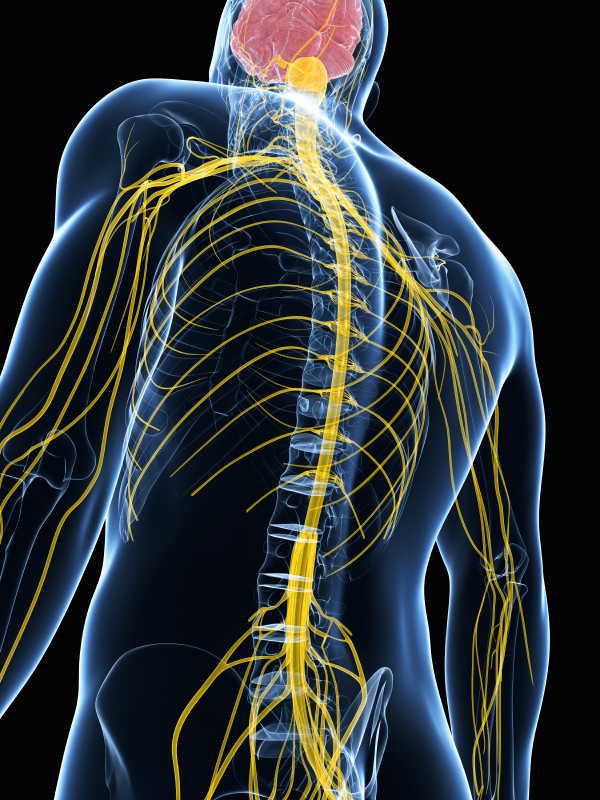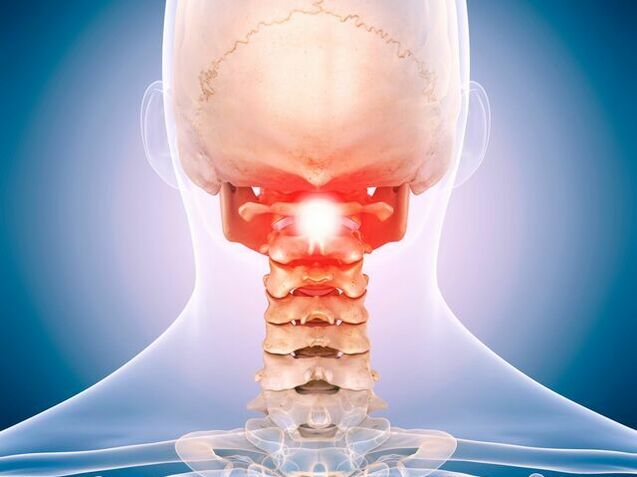
Our Services
NECK PAIN
If you suffer from neck pain, then it is important to know what is causing the pain, understand your symptoms, and find effective ways to get neck pain relief. Neck pain can be caused by poor posture, working long hours at a desk, technology use (text neck), sleeping position/pillow-type, car accidents, sport injuries, disc problems and stress.
When the vertebrae of the neck or cervical region of the spine are not in alignment, you may experience other symptoms besides pain, such as, stiffness, limited range of motion, tingling or numbness in your fingers/hands, headaches, shoulder pain and/or limited range of motion of the shoulder(s) and difficulty sleeping.
HEADACHES
According to the Migraine Research Foundation, 1 in 4 households include someone with migraines. In the United States, 18% of women, 6% of men and 10% of children experience migraines. Doctors of chiropractic successfully help thousands of individuals everyday obtain safe, effective, long-term relief from their headaches. This is because most headaches have a spinal, muscular, or habitual component, which the chiropractor has been trained to identify and treat.
There are different types of headaches: Cervicogenic headaches originate from tissues and structures in the cervical spine or neck region. The headache is generally a very constant, strong, yet dull pain. The most common location of pain is around the orbital (eye) region and upper neck area, but may also include other areas of the face, head and neck. The headache may also be accompanied by nausea, vomiting, dizziness, ringing of the ears, and sensitivity to light and sound. These headaches are caused by irritation or injury to the structures of the upper neck region, resulting in local neck pain, as well as, referred pain to the temporal and facial regions. They can be precipitated or aggravated by head and neck movements, and by applying deep pressure to the muscles of the upper cervical area.
Tension headaches are the most common type of headache, representing approximately 60% of all headaches. They can be caused by the sustained contraction of the muscles in the neck and head region. There is a constant pressure sensation, generally feeling like a tight band is wrapping around the head. Pain usually starts in the base of the skull or temporal regions of the head and spreads outward to affect other areas of the head and neck.
Post-traumatic headaches are initiated from head or neck injury, such as in whiplash-type injury or blow to the head. The resulting headache varies from person to person.
Drug-induced headaches are usually dull, diffuse and non-throbbing affecting both sides of the head. They are frequently present first thing in the morning and persist throughout the day. Experts claim that as many as 60% of chronic headaches are drug-induced. It's quite ironic that the abuse or frequent use of medications used to relieve the symptoms of a headache can actually end up perpetuating the headache or cause new headaches. Many individuals think that consistent headaches are normal and will take over-the-counter medications or prescription drugs to find relief from pain. Unfortunately, these types of drugs only work to dull the pain rather than find the cause. Because they don't treat the underlying cause, a headache will often return.
BACK PAIN
There are many factors contributing to your back pain, such as vertebral subluxations, faulty spinal biomechanics, deconditioned and weak spinal musculature, improper firing patterns of spinal musculature, poor postural habits, poor diet and nutritional practices, and a history of activities (work or play). Other causes may include auto, sports, and workplace accidents. These scenarios generate high levels of spinal stress, which may develop into back pain. If not dealt in a timely manner, they can become chronic, leading to degeneration of the spine.
SCIATICA
The sciatic nerve is the longest nerve in the body. It is created by the lumbar spinal nerves and travels down the back of both legs. Pressure on the sciatic nerve can cause it to become inflamed, which results in the condition known as sciatica. No two cases of sciatica are alike. One patient may feel a dull ache in the calf. Another may feel a knot in the muscles of one buttock. Sciatica may feel like a sharp, shooting pain down the back of one or both legs. It could manifest as a loss of strength in the leg and foot. It may also feel like burning, tingling, or numbness. Although the symptoms may be different for each person, the origins of sciatica can be the same: spinal dysfunction. Both vertebral subluxations and sacral subluxations can cause sciatica.

PRENATAL/POSTNATAL CARE & KIDS
Chiropractic care in pregnancy is vital to the normal physiological function of both the mother and the baby in pregnancy and birth. During pregnancy, there are several endocrine and physiologic changes that occur in preparation for creating the environment for the developing fetus. The protruding abdomen, which leads to an increased low back curve, postural changes, pelvic changes, and increased release of the hormone Relaxin can all cause spinal or joint misalignments.
It is important to establish balance and alignment within the pelvis during pregnancy in order to allow ample room for the developing fetus. If there is not enough room for the developing fetus, it can cause intrauterine constraint. Intrauterine constraint can therefore lead to breech presentations, developmental issues and the possibility of medical intervention during labor and delivery. Chiropractic adjustments are completely safe all the way through to the end of pregnancy.
Potential benefits of chiropractic care throughout pregnancy are a healthier pregnancy, reduction in the time of labor and delivery, relieving neck, back or joint pain and prevention of intervention.
Chiropractic adjustments are completely safe all the way through to the end of pregnancy. There are other benefits to receiving spinal adjustments such as less discomfort, fewer breech births, and a less complicated delivery. Many women wait to receive adjustments late into their pregnancy to help in the movement of the baby’s head down into position for vaginal childbirth. Chiropractic is a safe and very effective in turning breech babies. One approach in particular is called the Webster Technique, which focuses on properly aligning the spine and pelvis, re-establishing normal physiological function. In this balanced state, the baby can do what it's designed to do, find the best possible position for itself for birth.
Why should children get chiropractic adjustments?There are so many things that parents do to ensure the health of their children. Prior to getting pregnant, women take prenatal vitamins and prepare their bodies for pregnancy. During pregnancy, you eat right and avoid harmful activities that may cause harm to your unborn child, and once the baby arrives you hopefully breastfeed knowing its superior form of nutrition. In all, you do everything possible to ensure your child's health and well-being. Getting your child's spine checked after birth can make a big difference. Spinal misalignment can be caused by intrauterine constraint, breech presentations, or a difficult delivery.
So, when should a baby's spine be checked?The rule of thumb is whenever they meet a new milestone. (1) After birth, (2) when the baby starts to hold his/her head up, (3) when the baby sits, (4) starts to crawl, (5) standing and learning to walk. (6) Toddlerhood through childhood is also a very "physical" time. It is a time when a child's first steps turn into running, jumping, falls and accidents, which are all a part of childhood. (7) Repeated falls and accidents can cause subluxations, which are important to address immediately after they happen.A child's spine is very supple and resilient. We do not adjust babies and kids the same way we do adults. With babies, we use approximately 5 lbs. of pressure (the amount of pressure to check ripeness of fruit), and with kids, we use a little bit more pressure to adjust the vertebrae and joints
that need to be addressed.

ORTHOPSPINOLOGY ~ UPPER CERVCIAL
This specific chiropractic technique focuses on aligning the upper cervical spine. The spinal anatomy of this region is unique in many ways. There are only two vertebrae in the spine with common names - the Atlas and the Axis. The Atlas, or C1 vertebra, is the first and topmost vertebra in your body. Named through Greek Mythology, the Atlas held up the world, or in this case, the eight to twelve pound world you carry on your shoulders, your head. The second vertebrae under the Atlas is called the Axis, or C2 vertebra, because it is serves as the axis of rotation for your head and neck.
Together, this area of the spine is the most mobile and lacks interlocking joints; therefore, traumatic forces, such as falls, repetitive motions or motor vehicle accidents, can easily misalign the upper cervical spine. When a misalignment of the upper cervical spine occurs, stresses are placed on the nervous system in a variety of ways that can negatively impact your health.
Research from both the medical and chiropractic fields have drawn direct connections between the upper cervical spine and the cerebellum for postural control. Information sent from the upper cervical spine to the brain is constantly regulated by the position of the head and neck. This information is analyzed and conveyed back to the spine to facilitate proper muscle tone and joint control to enable the body to function appropriately in response to our spatial environment. Input to other areas of the brain, as well as Cranial Nerves, may also be affected by the malpositioned upper cervical spine. Without proper information into the spinal cord, cerebellum and brainstem, the body becomes structurally imbalanced leading to spinal dysfunction, premature degeneration and pain. Upper cervical doctors are trained to determine exactly how the upper cervical spine is misaligned, and the set-up and exact angle needed to correct it and return to a state of balance.
The doctor's role is to restore spinal integrity and body balance. Your role is to balance the other parts of your life - good nutrition, physical activity, enough rest, and a positive attitude!
*All information courtesy of The Society of Chiropractic Orthospinology*
https://www.orthospinology.org/patients/what-is-orthospinology
Together, this area of the spine is the most mobile and lacks interlocking joints; therefore, traumatic forces, such as falls, repetitive motions or motor vehicle accidents, can easily misalign the upper cervical spine. When a misalignment of the upper cervical spine occurs, stresses are placed on the nervous system in a variety of ways that can negatively impact your health.
Research from both the medical and chiropractic fields have drawn direct connections between the upper cervical spine and the cerebellum for postural control. Information sent from the upper cervical spine to the brain is constantly regulated by the position of the head and neck. This information is analyzed and conveyed back to the spine to facilitate proper muscle tone and joint control to enable the body to function appropriately in response to our spatial environment. Input to other areas of the brain, as well as Cranial Nerves, may also be affected by the malpositioned upper cervical spine. Without proper information into the spinal cord, cerebellum and brainstem, the body becomes structurally imbalanced leading to spinal dysfunction, premature degeneration and pain. Upper cervical doctors are trained to determine exactly how the upper cervical spine is misaligned, and the set-up and exact angle needed to correct it and return to a state of balance.
The doctor's role is to restore spinal integrity and body balance. Your role is to balance the other parts of your life - good nutrition, physical activity, enough rest, and a positive attitude!
*All information courtesy of The Society of Chiropractic Orthospinology*
https://www.orthospinology.org/patients/what-is-orthospinology
LOW LEVEL LIGHT THERAPY
Low Level Laser Therapy (LLLT), also known as or Cold Laser
Therapy, is a non-invasive, pain-free treatment utilizing specific
wavelengths of light to stimulate cellular activity and promote
natural healing processes. Erchonia’s state-of-the-art LLLT
devices deliver targeted, low-intensity laser beams to the
affected tissue, enhancing cell metabolism, reducing
inflammation, and accelerating tissue repair. Widely used for pain
management, wound healing, and various musculoskeletal
conditions, Erchonia’s LLLT offers a safe, effective, and drug-free
solution for patients seeking relief and improved quality of life.
Erchonia uses low level lasers in the visible light spectrum. The primary mechanism for the absorption of visible light photons is the elevation of electrons to higher energy levels. This is known as molecular excitement and can be explained deeper through visible/ UV Spectroscopy.
Visible light photons match the energy volt (eV) or frequency between the orbits of electrons to move the electron to a higher state (excite). It is in this excited state that chemical reactions of molecules occur. One of the most important chemical reactions is when photons of visible light energy strike certain atoms, that energy may push an electron to a higher energy level where it can be picked up by an electron acceptor. The electron transport chain uses the high-energy electrons to convert ADP into ATP. The electron transport chain (ETC) is the primary source of ATP production in the body and is vital for life!
What’s the difference between Lasers vs. LED?A. Erchonia 3LT® devices used electric diodes, which are high end, culminated and strictly measured within a plus/minus .05%. LEDs are inexpensive, non-focused wide range light sources. The primary difference is in performance and depth of penetration. Laser diodes penetrate, working subcutaneously, LEDs do not affecting the surface only.
https://www.erchonia.com/resea...https://www.erchonia.com/research-articles/